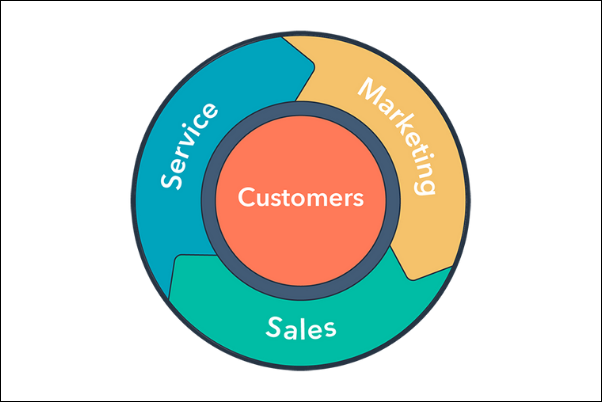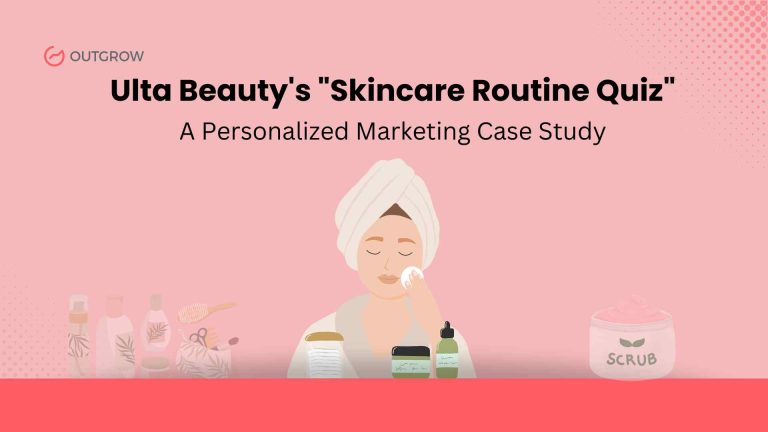Why You Should Use the Marketing Flywheel
Table of Contents
Until recently any search for the term “marketing flywheel” would have given you results based on mechanical flywheels and motion physics. All that has now changed as big orange aka Hubspot has decided that the funnel is a flawed representation of marketing and customer acquisition in general.
Evolution of Business Orientations
Well, they are right. Business orientation has been changing continually since the industrial revolution. It all began with the production orientation from the days of Henry Ford famously encapsulated by the phrase “They can buy any car as long as it is black”. As production techniques improved, product differentiation ensued which shifted business focus to production and later selling. While product orientation focused on differentiation and delivering a superior product, the selling orientation focused on aggressive selling to grow quickly.
Now, businesses are more focused on marketing orientation where the needs of the customers are clearly defined and then offerings are developed to address them. A slightly evolved take on the same concept is the customer orientation where the organization realizes that the customer is the primary driver of growth and all efforts of marketing need to be directed to this end.
Happy customers mean more promotion through word of mouth and other positive behaviors which provide impetus to the company’s growth. Ergo the flywheel, where the customer is at the center instead of the funnel where the customer is relegated to the bottom
Why Flywheels?
In the flywheel, the client assumes a central position and all activities of marketing revolve around the client. Consequently, the client provides impetus to your marketing efforts. They promote your product through word of mouth if your product is so goddamn awesome which we assume it is. The theoretical representation of this is that the flywheel spins faster when there is a stronger central body. In this case, the central body is the client.
Now rather than getting rid of the funnel altogether the need of the hour is to complement it with a renewed customer focus to guarantee success. The funnel is a nifty mechanism to visualize customer acquisition. Once we’ve drawn them in, the customer’s existence is happily forgotten as we move on to rein in the next.
This is where the construct is flawed and leads to customer base erosion. Bringing the flywheel into the mix will serve as a constant reminder to us marketers, salespeople, and founders that the customer is not to be forgotten easily.
How do I Use the Funnel and the Flywheel?
The funnel is an accurate representation of customer acquisition. Once the customer has been drawn in the flywheel kicks in. The flywheel should be used to come up with efforts by the marketing and sales teams to not just satisfy but exceed the expectations of the customers,
What Next?
Hubspot sums up their approach with the term “Delight”. Now, why is delight an important phrase? Delight is important because it is one of the key factors that can transform a one time buyer to a recurring customer thus increasing CLV customer lifetime value. Besides that, a regular customer will also become an advocate who will actively promote your product to his/her peers. This is especially important considering the fact that customers are more likely to trust the opinions of fellow customers when it comes to making buying decisions.
Delight is the most effective way to ensure the highest level of customer loyalty. Your customers are not only loyal buyers but also actively promote your product to other peers i.e. they do your work for you. The only difference is that the conversion rate is higher.
So moving forward, dedicate a wing of your marketing and sales teams to delight your customers. Going the extra mile is worth the effort in marketing as it is in many other walks of life.
Delight
You can delight your customers by performing tasks that are within the normal bounds of product or service delivery, responding on time, setting the right expectations and delivering accordingly, offering top-notch customer service, etc.. Since a lot of firms are already ticking these boxes, delight has taken a new definition. Delight is now essentially going above and beyond your client’s expectations, a business transaction typically ends with the hand over of the product or service anything the firm does beyond this is unexpected for the client and will lead to delight.
Here are a few common ways
- Provide a small yet unexpected discount
- A personalized thank you message
- Free access to a new feature for a limited time
- A small extension when their product subscription is about to end
And here are a few whacky ones
- Create and share a Spotify playlist
- Provide a free meal coupon
- Send them free stickers
- Invites to events relevant to their interests
Here’s adding more to making the process of product/service delivery flawless and mutually enriching
- Strive to provide 24/7 support utilizing chatbots
- Focus on providing multilingual content to cater to a local audience. Hyper-localize content so that you resonate with your audience better
- Assign commissions based on reps who maintain the lowest attrition rates
- Finally, focus on retention which is why you need the funnel
To delight your client you need to make a genuine effort to understand him/her and what they care about. Also, efforts to humanize yourself, empathize with your clients’ problems, and interact with them.
If there’s one key takeaway, it’s to delight your customers at every turn. Do this and your bonds will grow stronger.







